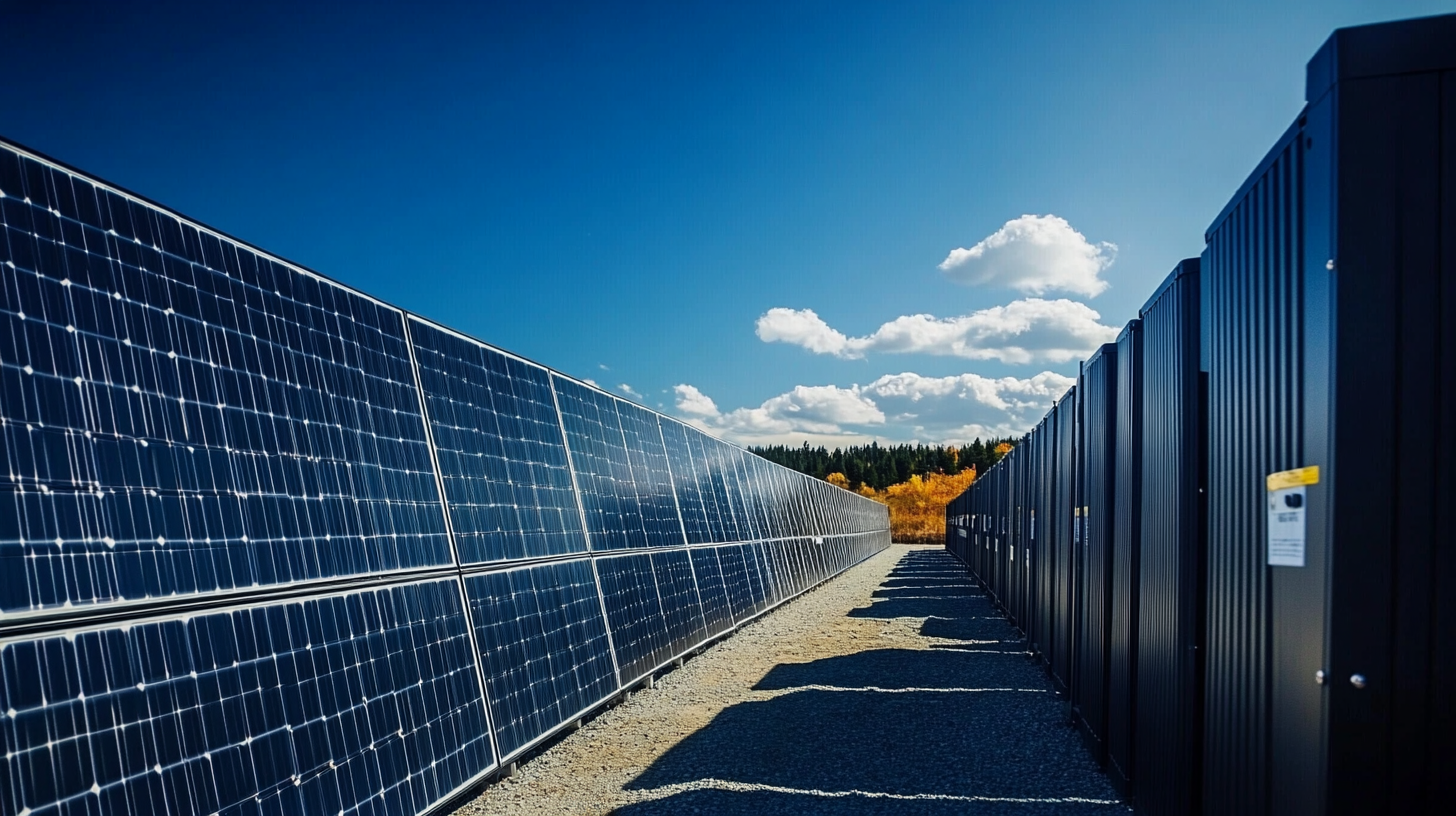Factory Tour
Ways to Maximize Efficiency with Wall-Mounted Energy Storage Battery Solutions
In today's fast-paced world, energy efficiency and sustainability are at the forefront of our technological advancements. One innovative solution that has emerged in recent years is the Wall-Mounted Energy Storage Battery. These compact and versatile systems not only optimize space but also allow homeowners and businesses to harness renewable energy and store it for later use. By integrating a Wall-Mounted Energy Storage Battery into existing energy systems, users can effectively manage their energy consumption, reduce utility costs, and ensure a reliable power supply during outages. In this blog, we will explore various strategies and best practices to maximize the efficiency of Wall-Mounted Energy Storage Battery solutions, enabling you to make the most of this groundbreaking technology. Join us as we delve into the essential tips and techniques that can transform your energy management approach and contribute to a more sustainable future.

Benefits of Wall-Mounted Energy Storage Systems for Homeowners
Wall-mounted energy storage systems offer homeowners a range of benefits that can significantly enhance energy management and sustainability. These compact solutions are designed to fit seamlessly into any home environment, maximizing available space while providing a powerful energy reserve. One of the primary advantages is the ability to store excess energy generated from renewable sources, such as solar panels. This stored energy can be utilized during peak demand times or in instances of power outages, ensuring that homeowners have a reliable energy source at their fingertips.
Furthermore, wall-mounted energy storage systems can lead to substantial cost savings on electricity bills. By allowing homeowners to draw stored energy during high-cost periods, these systems help to mitigate energy expenses and reduce reliance on the grid. In addition, many local utility companies offer incentives for installing energy storage solutions, further enhancing their economic appeal. The integration of smart technology also allows for real-time monitoring and control, providing users with insights into their energy usage patterns and enabling them to optimize their consumption for greater efficiency.
Ways to Maximize Efficiency with Wall-Mounted Energy Storage Battery Solutions
Best Practices for Installation and Maintenance of Battery Solutions
When considering wall-mounted energy storage battery solutions, proper installation and maintenance are paramount to maximizing efficiency. First and foremost, it is essential to select an appropriate location for the battery. Ideally, the installation site should be dry, well-ventilated, and at a stable temperature to avoid overheating or moisture build-up. Ensuring that the wall can support the weight of the battery, along with proper mounting hardware, is crucial to prevent any accidents or damage. Additionally, it's important to follow manufacturer guidelines for installation, which can include specific wiring protocols and safety measures to ensure optimal performance.
Maintenance of wall-mounted battery systems should not be overlooked. Regular checks for physical damage, loose connections, and signs of wear can help identify potential issues before they become serious. Cleaning the battery surfaces and checking for dust accumulation will also enhance the battery’s performance and longevity. Furthermore, adopting a schedule for monitoring battery health through diagnostics can provide insights into its charging cycles, capacity status, and overall efficiency. By following these best practices, users can ensure that their wall-mounted energy storage systems operate at peak efficiency and extend their service life.
Ways to Maximize Efficiency with Wall-Mounted Energy Storage Battery Solutions
This pie chart represents the best practices for installation and maintenance of wall-mounted energy storage battery solutions. Each segment illustrates the percentage of focus on different aspects that contribute to maximizing battery efficiency.
Innovative Technologies Enhancing Wall-Mounted Energy Storage Efficiency
Wall-mounted energy storage battery solutions have emerged as a vital component in the quest for efficiency in energy management. Innovative technologies are transforming how these systems operate, placing a heavy emphasis on maximizing performance while minimizing space requirements. Advanced lithium-ion batteries, for instance, have significantly improved energy density, allowing for higher storage capacity in a more compact design. This not only optimizes physical space but also enhances the overall energy output and longevity of the system.
Additionally, smart energy management systems integrated into wall-mounted batteries are proving essential in boosting efficiency. These systems utilize real-time data and AI algorithms to monitor energy usage patterns, enabling users to make informed decisions about energy consumption. By automatically optimizing charging and discharging cycles based on demand, these technologies help in extending battery life while ensuring that energy is available when it's most needed. Furthermore, the incorporation of renewable energy sources such as solar panels further enhances the efficiency of these solutions, creating a sustainable energy ecosystem right within your walls.

Integrating Renewable Energy Sources with Wall-Mounted Battery Systems
Integrating renewable energy sources with wall-mounted battery systems has become a pivotal strategy for enhancing energy efficiency in both residential and commercial settings. As advancements in energy storage technologies continue to unfold, these systems offer convenient solutions to harness solar power effectively. For instance, recent developments in building-integrated solar photovoltaic (BIPV) systems not only enhance thermal comfort but also seamlessly integrate with wall-mounted batteries, enabling continuous energy use even during off-peak hours.
Moreover, innovative energy storage solutions are emerging that optimize the collection and utilization of renewable energy. For instance, systems designed for smart integration can intelligently manage energy flow, providing power where it's needed most while promoting energy independence. As companies around the world unveil new technologies, including AI-optimized storage, the capacity to integrate these systems with existing renewable infrastructures will increase, leading to greater sustainability and reliability in energy consumption. This integration can drive significant savings and contribute to a more resilient energy grid while addressing growing environmental concerns.
Ways to Maximize Efficiency with Wall-Mounted Energy Storage Battery Solutions
| Feature | Description | Benefits |
|---|---|---|
| Integrated Solar Solutions | Batteries that work alongside solar panels for optimal energy collection and storage. | Reduces dependency on the grid and harnesses free electricity. |
| Smart Energy Management | Advanced software that optimizes the use of stored energy based on usage patterns. | Enhances efficiency and minimizes energy waste. |
| Real-Time Monitoring | Systems that provide live updates on battery status and energy use. | Allows homeowners to make informed decisions and track energy savings. |
| Compact Design | Space-saving wall-mounted batteries that fit in smaller areas. | Ideal for urban settings or homes with limited space. |
| Scalability | Modular systems that can be expanded or upgraded as energy needs grow. | Ensures long-term adaptability and investment protection. |
Cost-Benefit Analysis: Investing in Wall-Mounted Energy Storage Solutions
Investing in wall-mounted energy storage solutions can significantly enhance energy efficiency while offering potential financial benefits. As homeowners consider integrating energy storage with solar panel systems, they are met with various products and installation options. The initial cost of these systems might seem high; however, a thorough cost-benefit analysis reveals a favorable long-term outcome. With the right energy storage options, users can store excess energy generated during peak sunlight hours for use during peak demand, effectively lowering their electricity bills.
Furthermore, the rise of lithium battery technology has made these storage solutions not only more efficient but also more affordable. As more manufacturers enter the market, competition drives prices down, making it an opportune time for homeowners to invest. Additionally, some energy initiatives aim to assist federal facilities with energy efficiency technologies, indicating governmental support for homeowners who choose to adopt these innovations. Ultimately, the combined advantages of lowered energy costs, government backing, and technological advancements present a compelling case for investing in wall-mounted energy storage solutions.







